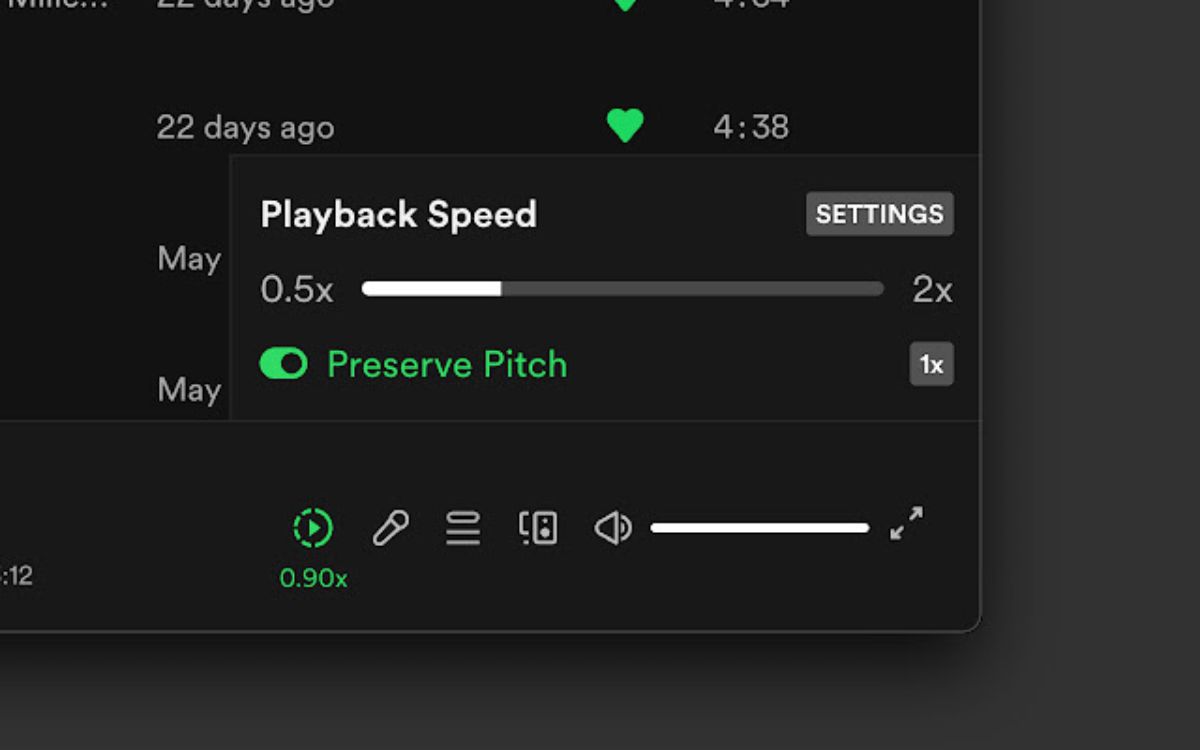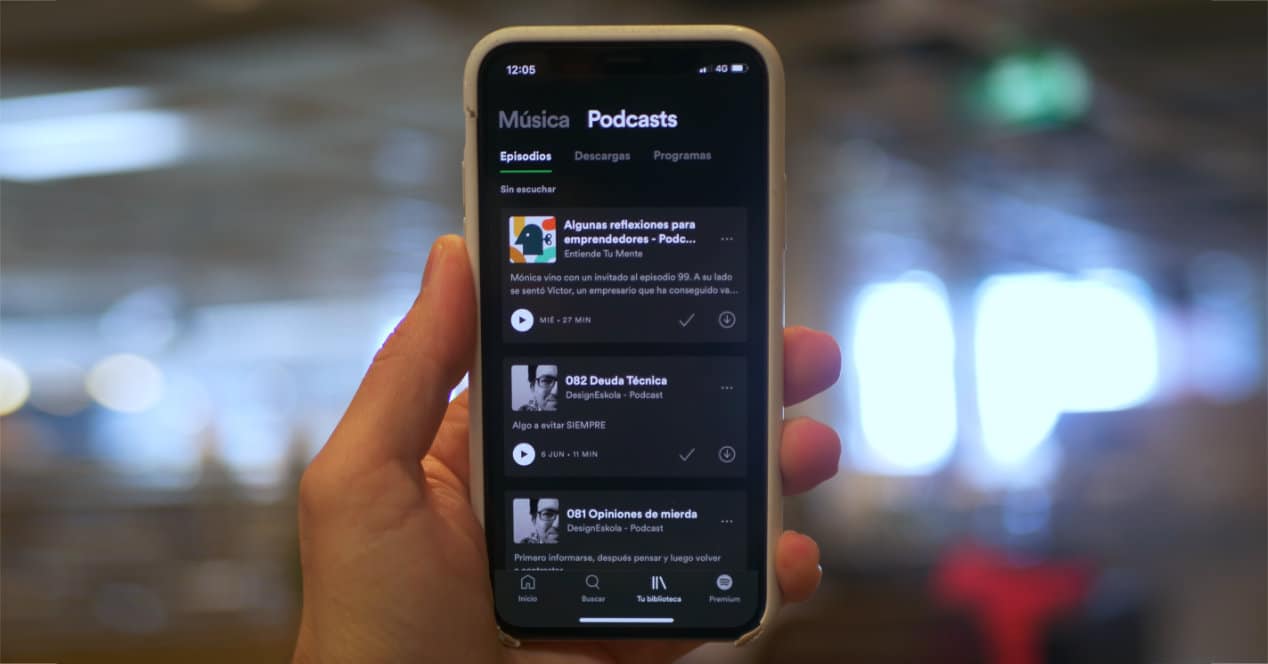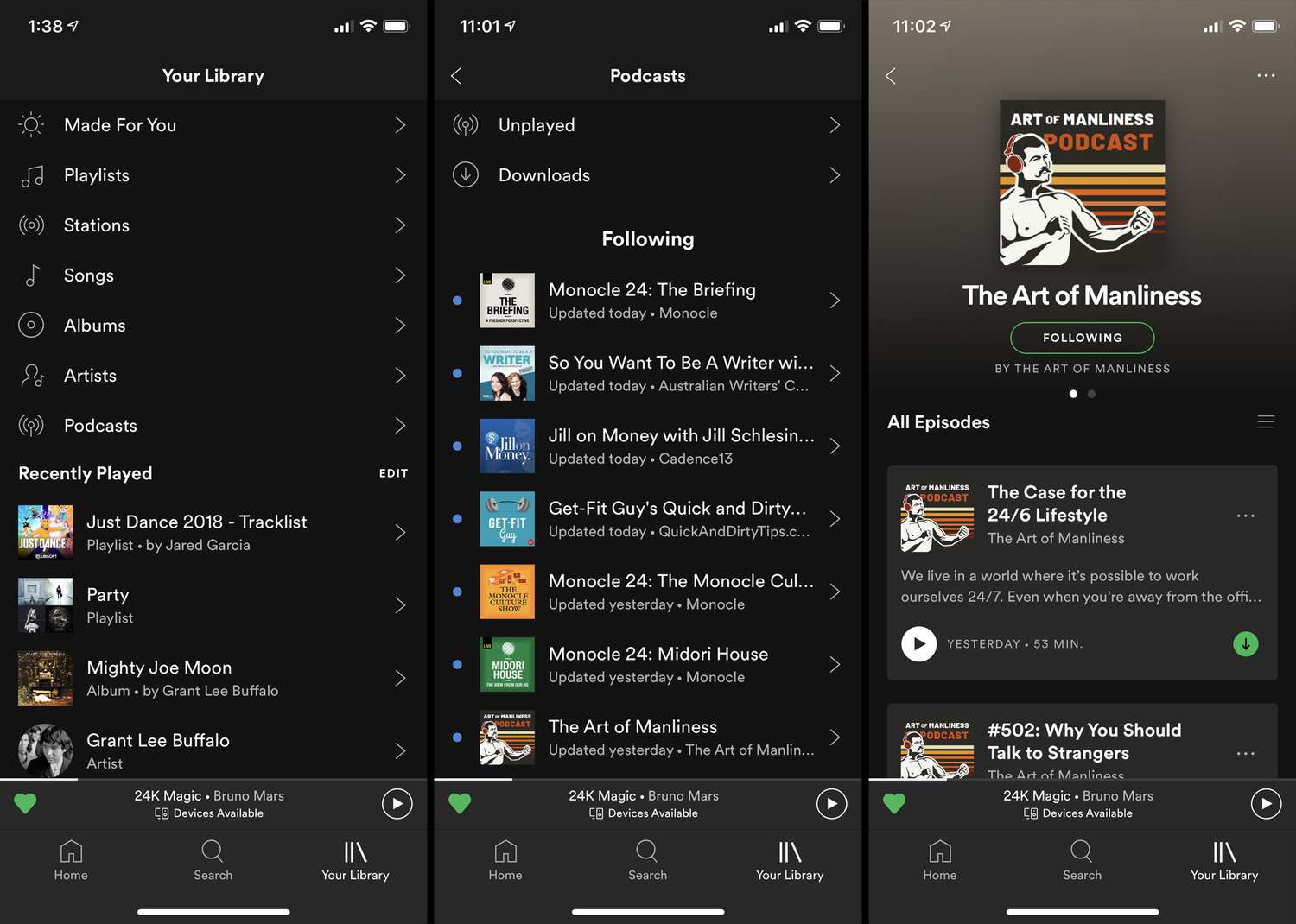Home>Events & Info>Podcast>How To Upload Podcast On Spotify


Podcast
How To Upload Podcast On Spotify
Modified: January 22, 2024
Learn the step-by-step process of uploading your podcast on Spotify, the leading platform for podcasts. Enhance your podcasting journey and reach a wider audience with Spotify's global reach.
(Many of the links in this article redirect to a specific reviewed product. Your purchase of these products through affiliate links helps to generate commission for AudioLover.com, at no extra cost. Learn more)
Table of Contents
- Introduction
- Step 1: Creating a Spotify Account
- Step 2: Preparing Your Podcast Files
- Step 3: Choosing a Podcast Host
- Step 4: Submitting Your Podcast RSS Feed to Spotify
- Step 5: Verifying Your Podcast on Spotify
- Step 6: Uploading Your Podcast Episodes
- Step 7: Customizing Your Podcast’s Spotify Listing
- Step 8: Promoting Your Podcast on Spotify
- Conclusion
Introduction
Welcome to the exciting world of podcasting! Whether you’re a seasoned podcaster looking to expand your reach or a beginner eager to share your thoughts and passions, getting your podcast on a platform like Spotify can greatly enhance your visibility and audience engagement.
As one of the largest podcast platforms in the world, Spotify offers a vast audience and valuable exposure for your podcast. In this article, we will guide you through the process of uploading your podcast to Spotify, step by step.
Before we dive into the details, it’s important to note that you will need a few things in place before you can get your podcast on Spotify:
- A Spotify account
- Your podcast files prepared and ready for upload
- A podcast hosting service
- Your podcast’s RSS feed
If you already have these elements, great! If not, don’t worry. We’ll walk you through each step so you can get your podcast on Spotify in no time.
It’s worth mentioning that uploading your podcast to Spotify is not just about getting your content out there. It’s also about optimizing your podcast for visibility and discoverability. Spotify uses algorithms and user behavior to recommend podcasts, so it’s crucial to take steps to ensure your podcast stands out.
Throughout this article, we’ll provide tips and best practices for customizing your podcast’s Spotify listing, promoting your podcast effectively, and leveraging Spotify’s features to attract and engage with your audience.
So, let’s jump in and get your podcast ready to conquer the Spotify airwaves!
Step 1: Creating a Spotify Account
The first step in getting your podcast on Spotify is to create a Spotify account. If you already have one, you can skip this step and proceed to the next.
Creating a Spotify account is a quick and straightforward process:
- Visit the Spotify website and click on the “Sign Up” button.
- You’ll be presented with the option to sign up with Facebook or with an email address. Choose the option that works best for you.
- Fill in the required information, such as your preferred display name, email address, and password. Make sure to choose a reliable email address as this will be used for communication related to your podcast.
- Agree to the terms and conditions and click on the “Sign Up” button.
- Verify your email address by clicking on the link sent to your inbox. This step is essential to activate your account.
Once your account is created and verified, you’re ready to move on to the next step.
It’s worth noting that you can create a Spotify account for free, but there is also a premium subscription option available. The free account allows you to listen to podcasts and music with occasional advertisements, while the premium subscription offers an ad-free experience, higher audio quality, and additional features. For podcast creators, having a premium account can provide insights and analytics about your podcast’s performance, which can be useful for tracking your growth and making data-driven decisions.
Now that you have your Spotify account set up, let’s move on to the next step: preparing your podcast files.
Step 2: Preparing Your Podcast Files
Before you can upload your podcast to Spotify, it’s essential to have your podcast files prepared and ready for upload. This step involves organizing and formatting your podcast episodes, ensuring they meet the required specifications.
Here are some key aspects to consider when preparing your podcast files:
- File Format: Ensure that your podcast episodes are in a supported audio format, such as MP3 or WAV. These formats offer a good balance between quality and file size.
- Audio Quality: Aim for a high-quality audio recording to provide your listeners with a pleasant listening experience. Use a decent microphone and sound editing software to remove background noise and enhance audio clarity.
- Episode Length: Consider the ideal length for your podcast episodes. While it ultimately depends on the content and target audience, most podcasts range from 20 minutes to an hour. However, keep in mind that shorter episodes tend to attract more listeners, as they are easier to consume.
- Episode Titles and Descriptions: Craft catchy and descriptive titles for each episode, giving your potential listeners a glimpse into what they can expect. Additionally, write compelling descriptions that highlight the key topics or guests featured in the episode, enticing listeners to hit that play button.
- Episode Artwork: Design eye-catching artwork for your podcast episodes. This includes creating a unique cover image that represents your episode and aligns with your overall podcast branding. Consider using graphics, typography, and colors that capture the essence of your content.
Take the time to review and edit your podcast episodes, ensuring they align with your podcast’s theme, goals, and overall quality standards. This step will help you make a strong impression on listeners and keep them coming back for more.
Once you have your podcast files prepared, optimized, and polished, it’s time to move on to the next step: choosing a podcast host.
Step 3: Choosing a Podcast Host
When it comes to getting your podcast on Spotify, having a reliable podcast hosting service is crucial. A podcast host serves as a central hub for your podcast files and generates an RSS feed, which is required for submitting your podcast to Spotify and other podcast platforms.
Here are some factors to consider when choosing a podcast host:
- Reliability: Look for a podcast host that offers reliable and stable hosting services. Your host should have a track record of minimal downtime, ensuring that your episodes are always accessible to your audience.
- Storage and Bandwidth: Consider the storage and bandwidth limitations provided by the host. Ensure that they offer enough space to store your podcast files and sufficient bandwidth to accommodate your expected number of downloads and streams.
- Price and Plans: Compare the pricing structures and plans offered by different podcast hosts. Take into account the features included in each plan, such as analytics, monetization options, branding customization, and customer support.
- Ease of Use: Evaluate the user interface and ease of use of the podcast hosting platform. A user-friendly hosting service will make it easier for you to upload and manage your podcast episodes.
- Integration with Spotify: Ensure that your chosen podcast host integrates seamlessly with Spotify. This integration will enable you to submit your podcast to Spotify with ease.
Some popular podcast hosting platforms that you can consider include Libsyn, Anchor, Podbean, and Buzzsprout. Research and compare the features and pricing offered by different hosts to find the one that best suits your needs.
Once you have selected a podcast host, sign up for an account and follow their instructions to upload your podcast files. The hosting platform will generate an RSS feed for your podcast, which you will need for the next step: submitting your podcast to Spotify.
Now that you have chosen a podcast host and uploaded your podcast files, it’s time to proceed with submitting your podcast RSS feed to Spotify.
Step 4: Submitting Your Podcast RSS Feed to Spotify
Now that you have your podcast files uploaded to a hosting platform and an RSS feed generated, it’s time to submit your podcast to Spotify. Here’s how you can do it:
- Visit the Spotify for Podcasters website at podcasters.spotify.com.
- If you haven’t already, sign in to your Spotify account.
- Click on the “Get Started” button to begin the submission process.
- Enter the URL of your podcast’s RSS feed in the provided field. This is the feed generated by your podcast hosting platform.
- Click on the “Next” button to proceed.
- Review the information displayed on the next page, which includes your podcast’s artwork, title, and description. Ensure that everything is accurate and represents your podcast effectively.
- If necessary, make any necessary edits or updates to your podcast’s information.
- Click on the “Submit” button to submit your podcast to Spotify.
After submitting your podcast, Spotify will review your submission to ensure that it meets their content guidelines and quality standards. This review process may take some time, so be patient. Once approved, your podcast will be available on Spotify, and you will receive an email notification confirming its availability.
It’s important to note that Spotify reserves the right to reject podcasts that do not meet their guidelines or violate any copyright or content regulations. Therefore, it’s crucial to ensure that your podcast adheres to these guidelines before submitting.
While waiting for the approval, you can start working on the next steps, such as creating engaging podcast episodes and customizing your podcast’s Spotify listing. Once your podcast gets the green light from Spotify, you’ll be ready to upload your podcast episodes.
In the next step, we’ll cover how you can verify your podcast on Spotify to gain access to additional features and insights.
Step 5: Verifying Your Podcast on Spotify
Verifying your podcast on Spotify is an important step to gain access to additional features and insights that can help you better understand your audience and track your podcast’s performance. Here’s how you can verify your podcast:
- Make sure you have already submitted your podcast’s RSS feed to Spotify and received confirmation that it has been accepted.
- Visit the Spotify for Podcasters website and sign in to your account.
- Once signed in, you will see your podcast listed in your dashboard. Click on it to access the details.
- You will be prompted to verify your ownership of the podcast. Spotify provides different verification methods, including email verification or connecting through your hosting platform. Choose the method that works best for you.
- Follow the provided instructions for the selected verification method.
- Once your podcast is successfully verified, you will gain access to valuable features such as detailed analytics, insights into your audience demographics, and the ability to create and manage podcast playlists.
Verifying your podcast not only provides you with valuable data to help you understand your audience’s preferences but also enhances the credibility of your podcast on the platform. It sets your podcast apart from unverified podcasts and gives listeners confidence in choosing your content.
Once you have verified your podcast on Spotify, it’s time to move on to the next step: uploading your podcast episodes.
Note that the verification process may vary slightly depending on the hosting platform you use. Spotify provides detailed instructions and support, so you can refer to their resources for specific guidelines relevant to your situation.
In the next step, we’ll guide you through the process of uploading your podcast episodes to Spotify and making them available to your eager listeners.
Step 6: Uploading Your Podcast Episodes
Now that your podcast is verified on Spotify, it’s time to start uploading your podcast episodes. Here’s how you can do it:
- Go to the Spotify for Podcasters website and sign in to your account.
- Navigate to your podcast’s dashboard, and you will find an option to add new episodes or manage existing ones.
- Click on the “Add Episode” button or the equivalent option provided.
- Provide the necessary details for your episode, including the episode title, description, and episode number (if applicable).
- Upload your podcast episode file by selecting it from your computer’s storage. Make sure your episode is in the required audio format.
- Include any relevant metadata such as guest names, show notes, or timestamps to provide additional context and information to your audience.
- Once you have filled in all the details, click on the “Next” or “Publish” button to finalize the episode upload.
- Repeat these steps for each episode you want to upload to Spotify.
It’s important to note that after uploading your episodes, it may take some time for Spotify to process them and make them available on the platform. Be patient and give it some time for the episodes to appear in your podcast’s Spotify listing.
Additionally, don’t forget to promote each new episode on your website, social media channels, and other platforms to build anticipation and engage with your audience. Encourage your listeners to subscribe, leave reviews, and share your podcast with others to help grow your audience on Spotify.
As you continue to create and upload new episodes, remember to regularly check your Spotify for Podcasters dashboard for any updates or new features provided by Spotify. This will help you stay up to date with the latest tools and opportunities to enhance your podcast’s visibility and engagement.
Now that your podcast episodes are uploaded, let’s move on to the next step: customizing your podcast’s Spotify listing to make it stand out.
Step 7: Customizing Your Podcast’s Spotify Listing
Customizing your podcast’s Spotify listing is an important step to make your podcast stand out and attract listeners. By optimizing your podcast’s appearance and providing relevant information, you can increase your podcast’s discoverability and engage with your target audience. Here’s how you can customize your podcast’s Spotify listing:
- Podcast Artwork: Make sure you have a visually compelling and high-quality podcast cover art. This is the image that represents your podcast on the Spotify platform, so it should be eye-catching and aligned with your podcast’s branding.
- Title and Description: Craft a descriptive and engaging title for your podcast that accurately represents your content. In the podcast description, provide a concise and captivating overview of your podcast’s theme, topics, and what listeners can expect to gain from it.
- Episode Titles and Descriptions: Optimize the titles and descriptions of your podcast episodes. Use clear and catchy titles that intrigue potential listeners. In the descriptions, provide a brief summary of each episode’s content, highlighting any guests, main points, or interesting topics discussed.
- Categorization and Tags: Choose the most relevant category for your podcast from the available options. This will help Spotify categorize and recommend your podcast to the appropriate audience. Additionally, use relevant tags to further refine the audience targeting and increase the chances of appearing in relevant search results.
- Episode Order and Playlist: Consider creating playlists to organize your podcast episodes, especially if you have a series or a specific theme. This allows listeners to easily navigate and discover related content within your podcast.
- Episode Release Schedule: Establish a consistent episode release schedule to engage your audience and keep them coming back for more. Whether it’s weekly, bi-weekly, or monthly, providing a predictable schedule helps build anticipation and loyalty among your listeners.
- Promotional Materials: Leverage Spotify’s resources and features to promote your podcast. This can include creating audiograms, teaser clips, or custom shareable links to entice potential listeners on various social media platforms.
By customizing these elements, you can make your podcast more appealing and engaging to potential listeners. Remember, the goal is to make your podcast stand out amidst the vast selection of podcasts available on Spotify. Take the time to optimize your listing, keeping in mind your target audience’s preferences and the unique aspects of your podcast.
Now that you have customized your podcast’s Spotify listing, it’s time for the final step: promoting your podcast on Spotify to boost its visibility and reach.
Step 8: Promoting Your Podcast on Spotify
Promoting your podcast on Spotify is essential to increase its visibility, attract new listeners, and grow your audience. Here are some effective strategies to promote your podcast on Spotify:
- Share on Social Media: Leverage the power of social media platforms to promote your podcast. Create engaging posts about new episodes, share behind-the-scenes content, and encourage your followers to listen and share. Utilize relevant hashtags and engage with your audience to build a community around your podcast.
- Collaborate with Other Podcasts or Influencers: Collaborating with other podcasts or influencers in your niche can significantly expand your reach. Consider guest appearances on other podcasts or inviting guests to your show. This cross-promotion exposes your podcast to new audiences who may be interested in your content.
- Utilize Email Marketing: Build an email list of dedicated listeners and send out regular newsletters about your podcast. Provide exclusive content, updates, and behind-the-scenes insights to keep your subscribers engaged and excited.
- Engage with Your Audience: Respond to comments, reviews, and messages from your listeners. Foster a sense of community by creating spaces, such as Facebook groups or Discord channels, where listeners can interact with you and fellow fans. Encouraging listener engagement generates word-of-mouth promotion and loyalty.
- Optimize for SEO: Apply search engine optimization techniques to your podcast’s Spotify listing. Use relevant keywords and phrases in your title, description, and episode titles to improve your podcast’s discoverability in Spotify’s search results.
- Create Engaging Content: Continually strive to create high-quality, valuable content that resonates with your target audience. Produce episodes that captivate and educate, leaving listeners eager for more. Invest in storytelling, conducting interesting interviews, and covering trending topics to keep your audience engaged.
- Run Ad Campaigns: Consider running targeted ad campaigns on Spotify or other platforms to reach a wider audience. Target specific demographics or geographical areas that align with your podcast’s niche to maximize your ad’s effectiveness.
- Attend Virtual Events or Conferences: Participate in virtual events or conferences related to your podcast’s topic. Engage in panel discussions, share your expertise, and network with other industry professionals. These events provide opportunities to promote your podcast to a relevant audience and establish yourself as a thought leader.
Remember that promoting your podcast is an ongoing effort. Consistency, creativity, and dedication are key to building your podcast’s presence on Spotify. Continually explore new avenues for promotion, stay engaged with your audience, and adapt your strategies based on their feedback and preferences.
With these promotion strategies in mind, you can increase your podcast’s visibility and attract new listeners on Spotify. Enjoy the journey of growing your podcast and connecting with an enthusiastic audience!
Now that you’ve learned how to promote your podcast on Spotify, it’s time to put your knowledge into action and watch your podcast thrive on the platform. Good luck!
Conclusion
Congratulations! You have successfully navigated the process of uploading your podcast to Spotify. By following the steps outlined in this guide, you have maximized your chances of success and set yourself up for growth in the podcasting world.
We began by creating a Spotify account and ensuring that your podcast files were properly prepared. Then, we discussed the importance of choosing a reliable podcast host and submitting your podcast’s RSS feed to Spotify. Verifying your podcast on Spotify allowed you to access additional features and insights.
Next, we explored the process of uploading your podcast episodes and customizing your podcast’s Spotify listing. By optimizing your podcast’s appearance, categorization, and description, you can attract and engage with your target audience more effectively.
Finally, we highlighted the significance of promoting your podcast on Spotify. Utilizing social media, collaborating with other podcasts or influencers, and engaging with your audience are essential strategies for increasing your podcast’s visibility and driving listener engagement.
Remember, the journey doesn’t end here. As you continue on your podcasting adventure, consistently create high-quality episodes, interact with your audience, and explore new promotional opportunities. With dedication and perseverance, your podcast can reach new heights on Spotify and beyond.
So, what are you waiting for? Start implementing the steps outlined in this guide and watch your podcast thrive in the dynamic and ever-growing world of podcasting on Spotify. Good luck, and happy podcasting!











